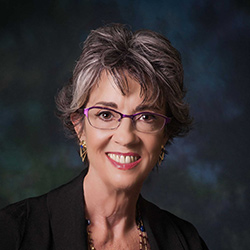Even our best research won’t have a lasting impact unless we use it to change policy and practice.
Ask me what sets the LeadingAge LTSS Center @UMass Boston apart from other types of research organizations and I’ll give you a few quick facts that might, at first blush, seem insignificant.
First, our researchers don’t wear white coats. (Thank goodness!)
We don’t work in laboratories.
We’re just as comfortable in the halls of affordable senior housing communities and nursing homes (where we conduct and share our research) as we are in the halls of state capitols and government office buildings (where we try to convince policy makers to act on our findings).
We’re actually part-time researchers who spend a good deal of time serving as champions for evidence-based aging services and as advocates for vulnerable older adults.
RESEARCH BRIDGING POLICY AND PRACTICE
Our research work is important, don’t get me wrong. But I’m convinced that even the best research won’t have a lasting impact unless researchers work in the real world, learning from and educating a host of stakeholders who have the power to use our findings to change policy and practice.
The LTSS Center’s list of stakeholders begins with LeadingAge members, their residents and clients, and other practitioners in the field of long-term services and supports (LTSS). But it doesn’t end there.
We’re also building important relationships with federal and state legislators, government officials, health care payers, hospitals and other health care systems, insurers, unions, bankers, older consumers, students, and anyone else who can help advance our research agenda.
This commitment to active engagement is the reason we use the words “research bridging policy and practice” as the tagline on our LTSS Center logo.
Here are 3 good examples of how we live out that motto each day.
PROMOTING PRAGMATIC TRIALS
In early March I traveled to the national conference of AMDA-the Society for Post-Acute and Long-Term Care Medicine, which represents medical directors, physicians, and other practitioners working in post-acute and long-term care settings.
I went to Atlanta to talk about the importance of pragmatic research trials, which take place in real-world settings and have more flexible requirements than the randomized controlled trials preferred by the scientific community.
Pragmatic trials resemble the program evaluations that the LTSS Center has conducted for years. They provide valuable information about how interventions work in different care settings, and they directly address the day-to-day challenges and concerns facing people who live and work in those settings. The flexible nature of these trials allows researchers to get their findings out quickly to the people who can actually put them into practice.
Thankfully, the practitioners and policy makers I met at AMDA seemed open to accepting the validity of this kind of research. Your organizations, and the people you serve, will surely benefit from that openness.
GETTING HOSPITALS TO SUPPORT HOUSING
My LTSS Center colleague Alisha Sanders and I traveled to the Association for Community Health Improvement (ACHI) conference in Chicago to talk directly with the people who help nonprofit hospitals meet federal requirements that they spend surplus funds on goods and services that address a community need.
We made a strong case for why hospitals should partner with affordable senior housing communities—even contributing their “social benefits” program funds—to bring essential housing-based services and supports to older adults with complex health conditions.
We shared our research showing that onsite teams consisting of a service coordinator and wellness nurse play an important role in helping these vulnerable housing residents reduce avoidable hospitalizations, and transition back home after a hospital stay. We also talked about our most recent exploration of potential financing mechanisms for this promising model.
The ACHI event gave us an opportunity to make some very good connections with a sector in which we don’t usually spend much time. We hope we convinced some hospital representatives to support housing-based services programs in their communities.
On a related note, our financing exploration has helped us start meaningful conversations with a variety of stakeholders about how we can work together to support, scale, and sustain housing plus services models over time. We’ve taken every opportunity, including the American Society on Aging’s annual Aging in America conference, to disseminate our work among people who can take it to the next level. And we’ll continue to do so.
INVESTIGATING A NEW JOB CATEGORY
Finally, I took some of our workforce research to the 2019 RISE Summit convened by LeadingAge California this spring. It was great to see that so many LTSS providers are becoming actively engaged in addressing workforce issues.
I talked about our work with the California Workforce Commission to flesh out a new job category for universal home care workers in California. The commission has already recommended this new job category as one of its 10 major priorities for workforce development.
I’ve been working with my LTSS Center colleague Natasha Bryant to conduct background work that will give the commission a better idea of what it would take to develop this new category of worker, what other states have done in this regard, and the challenges they faced.
You have my word that our report to the commission will not sit the shelf. Once we’ve completed our research, you’re sure to see us on the road again, spreading evidence-based information that we hope will lead to good policy and good practice in California and around the country.
After all, that’s what applied researchers do.

Robyn I. Stone, DrPH, is senior vice president of research at LeadingAge, and co-director of the LeadingAge LTSS Center @UMass Boston. Her widely published work addresses long-term care policy and quality, chronic care for people with disabilities, the aging services workforce, affordable senior housing, and family caregiving.
